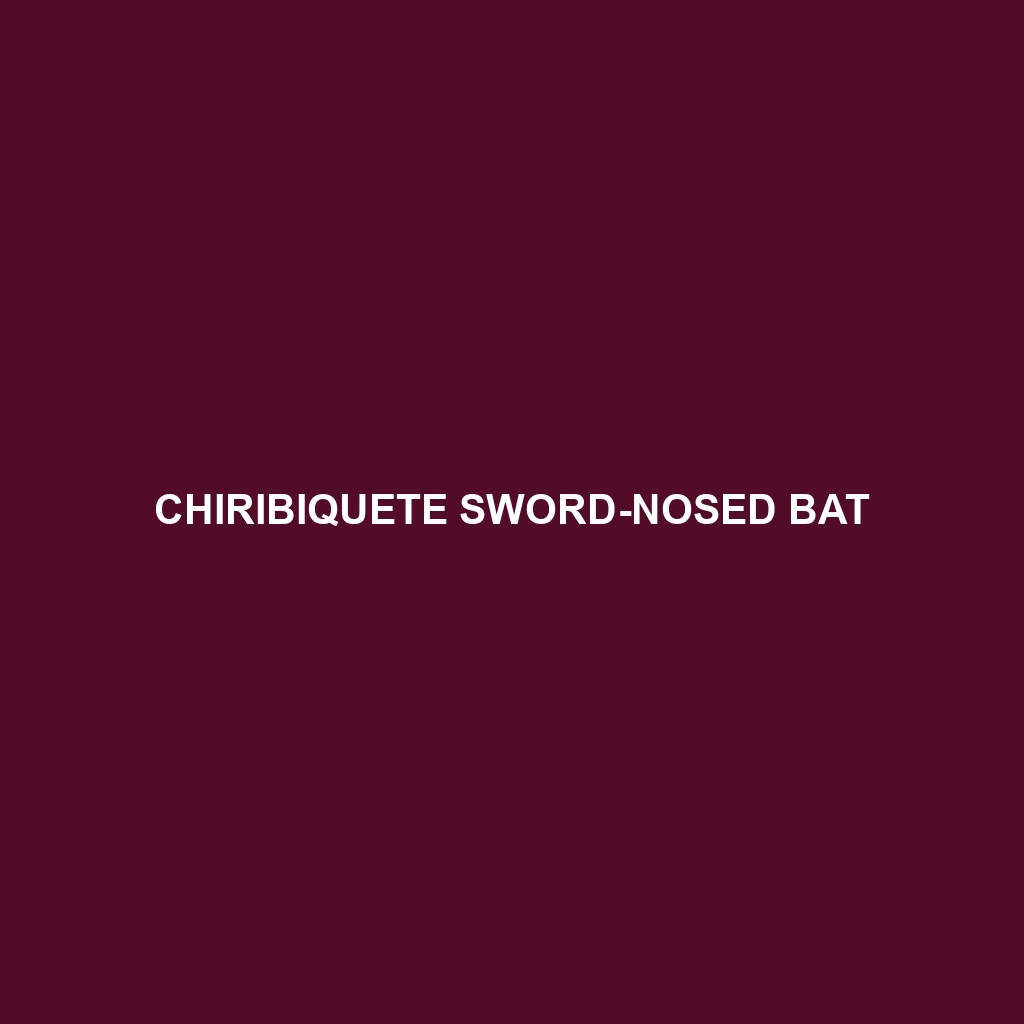Uncommon Sword-nosed Bat
Common Name: Uncommon Sword-nosed Bat
Scientific Name:
Habitat
The Uncommon Sword-nosed Bat is primarily found in tropical and subtropical regions of Central and South America. Its habitat typically includes dense rainforests, mangroves, and other humid environments. These bats are often located near water sources and thrive in areas with abundant vegetation, which provides essential roosting sites and hunting grounds. Geographic locations include countries such as Colombia, Ecuador, and parts of the Amazon Basin.
Physical Characteristics
The Uncommon Sword-nosed Bat is a medium-sized bat, measuring approximately 8-11 cm in body length with a wingspan ranging from 25-30 cm. Its fur is typically dark brown to black, with a lighter underbelly. A distinctive feature of the species is its elongated snout, resembling a sword, which aids in foraging for food. Their large, pointed ears are also notable and contribute to their excellent echolocation abilities.
Behavior
These bats are nocturnal, meaning they are primarily active at night. Uncommon Sword-nosed Bats are known for their agile flight patterns, utilizing their echolocation skills to navigate through dense foliage. They are typically social creatures, often roosting in colonies that can number in the hundreds. Their foraging behavior includes hunting for insects in mid-air and drinking water while in flight.
Diet
The diet of the Uncommon Sword-nosed Bat primarily consists of nocturnal insects, including moths, beetles, and flies. These bats exhibit a unique feeding strategy known as “hawking,” where they catch their prey in mid-air with precision. They play a critical role in controlling insect populations, which is vital for maintaining the balance of their ecosystems.
Reproduction
Reproductive habits of the Uncommon Sword-nosed Bat typically occur during the wet season, which varies by geographic location. Females give birth to one pup after a gestation period of approximately 2-3 months. The young are born hairless and vulnerable, relying on their mothers for warmth and nourishment for the first few weeks of life. Weaning occurs around 6-8 weeks after birth.
Conservation Status
The Uncommon Sword-nosed Bat is currently classified as “Vulnerable” according to the IUCN Red List. Habitat loss due to deforestation and agricultural encroachment poses significant threats to their populations. Conservation efforts are essential to protect their natural habitats and ensure the survival of this unique species.
Interesting Facts
– The Uncommon Sword-nosed Bat is known for its remarkable ability to fly silently, making it an effective predator of nocturnal insects.
– Their unique snout shape helps them access nectar from certain flowers, which may indicate a mutualistic relationship with plant species.
Role in Ecosystem
As insectivores, Uncommon Sword-nosed Bats play a vital role in their ecosystem by controlling insect populations. Additionally, their potential involvement in pollination helps promote the health of various plant species within their habitats. This bats serve as an essential link in maintaining ecological balance, benefiting both flora and fauna in their environment.
